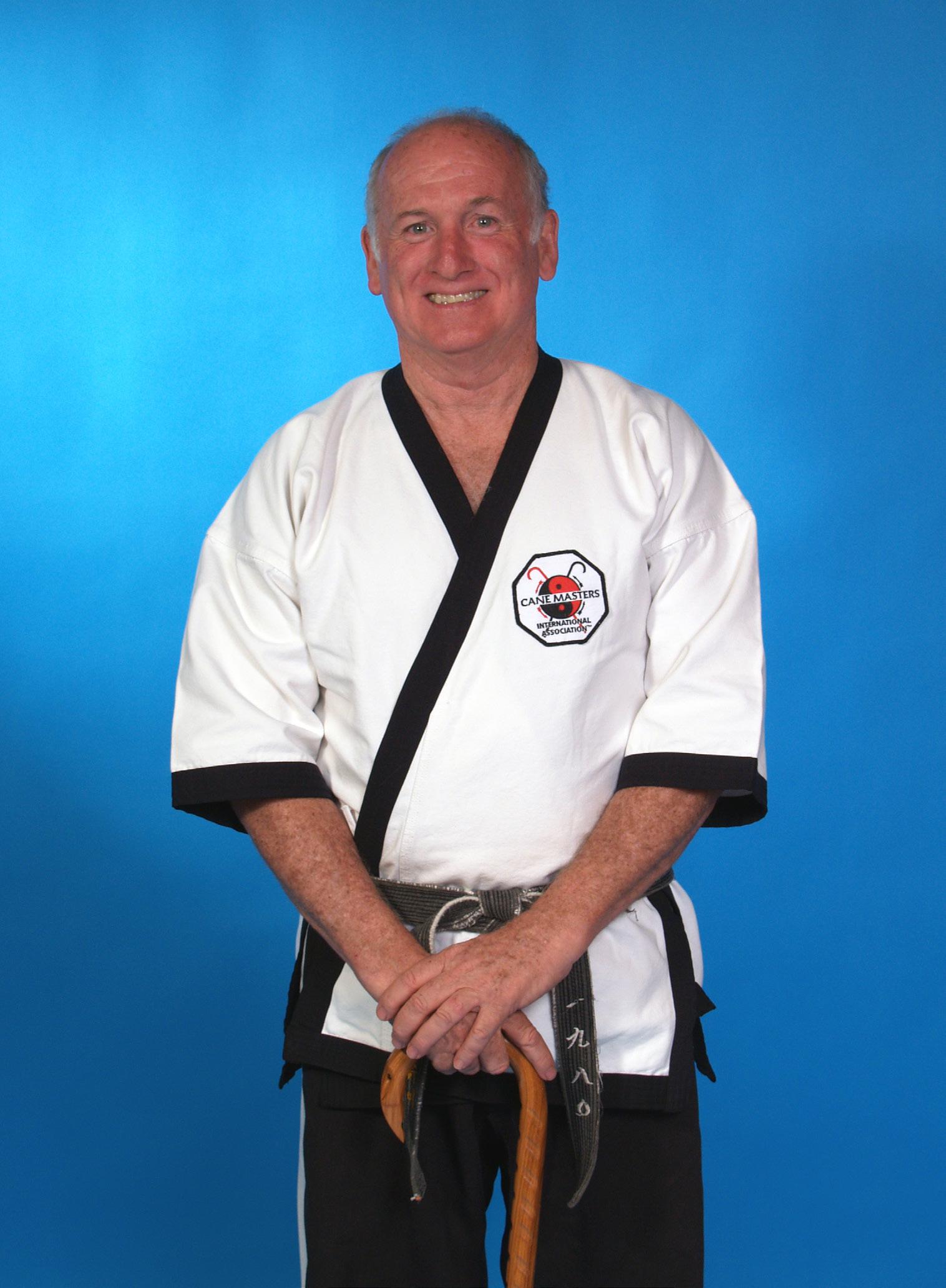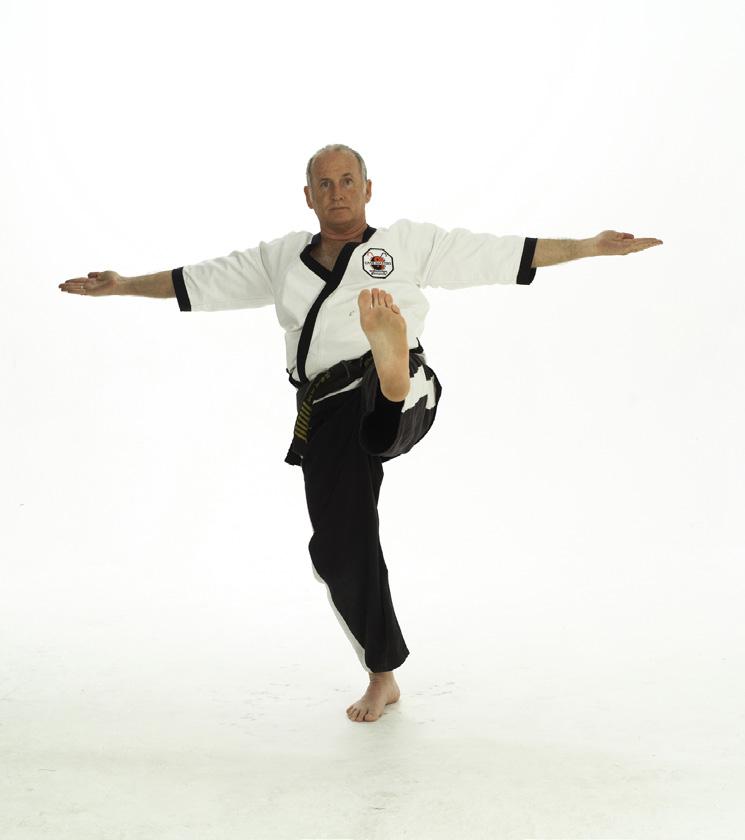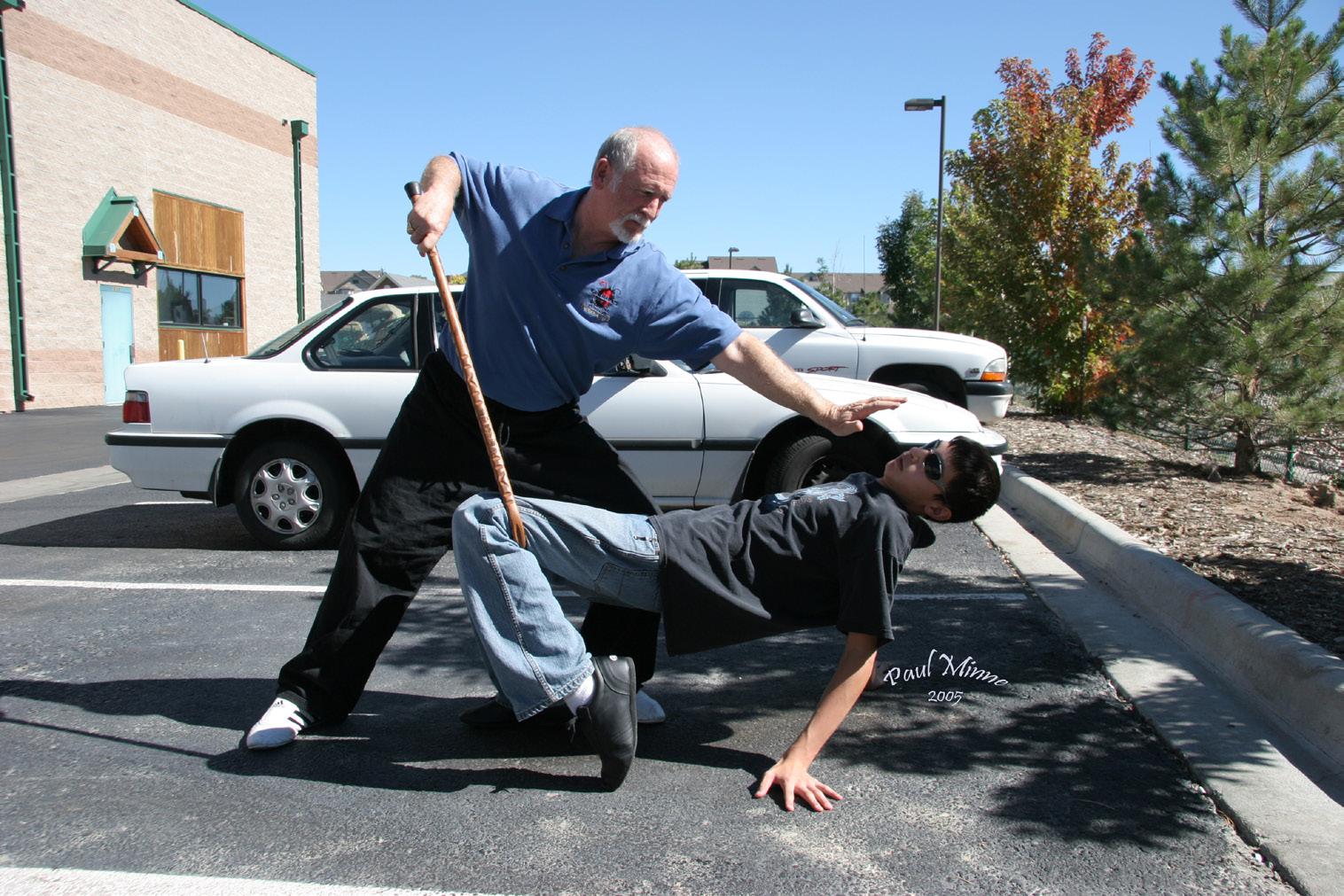
7 minute read
GM MARK SHUEY Rediscovering the Cane
By Master Guy Edward Larke
Giving an Ancient Tool Some Much Needed Respect Rediscovering the Cane: Part 1
Advertisement
By Master Guy Edward Larke
Perhaps one of the most riddles of the famous (or infamous) Egyptian Sphinx was:
“What walks on four legs in the morning, then two legs in the afternoon, and lastly three legs in the evening?’”
The answer of course is “man”. He crawls on all fours as a baby, then upright as an adult, followed by walking with the assistance of a walking stick or a cane in his older years.
The cane. According to Cambridge Dictionary, a cane is “a long stick with a handle that a person can lean on while walking.” This simple and humble object has likely been a part of human culture since we could walk upright. Every civilization, every culture, every sub-culture has had walking sticks of some shape or form.
They were more then overgrown twigs one put their weight on. Depending on the times, the culture and the income level, a cane/ walking stick could be a symbol of authority, a weapon (i.e., sword canes), and in many cases a symbol of affluence or style. My earliest strong memory of the cane was watching reruns on
TV of Patrick Mac Nee’s portrayal of the superspy John Steed on the cult classic “Avengers”. He was impeccably dressed with immaculate suits, a black bowler and a sleek black umbrella which hid a long, elegant blade. A guilty pleasure to be sure and one I will likely not forget. Next was watching the Sherlock Holmes TV show (the Jeremy Brett version). Every gentleman of any stature including Holmes himself had a walking stick of sort. Even the French gentleman thief Arsene’ Lupin was very fond of his when it came time to fend off knife wielding thugs. What changed? It’s hard to say. Perhaps it was post WWII era North America. We as a culture become very conscious of our appearances and fearful of growing older. Hollywood didn’t help much with that to say the least. With this newfound vanity came a fear of aging and the aged. The extended family decreased in importance and the older generation was being shoved off in droves as every new generation became more “ME” then “WE” in mentality. As people grew older they grew more nervous as it seemed society itself grew uncomfortable with their presence.
Along with this slow and tragic shift in societal values the cane became a symbol of enfeeblement and as a result anyone who actually needed one only used it as a last resort. Maybe there is something to it as the criminal fraternity tend to hunt those who show any weakness. Regardless, it is a vicious circle that doesn’t go away.
Images are important. We all know a picture speak a thousand words. Picture first an elegant, well-groomed older gentleman comfortably standing with a sleek, designer cane or walking stick in front of him. No, he doesn’t radiate physical power, but he radiates health, vigor and confidence. Take the same gentleman and change his clothes, his posture and give him a cheap, throwaway drugstore cane. What do you see? Weakness, illness, and perhaps pity. Who do you think will be a respected member of their community? Who will be forgotten except by perhaps less than savory characters? Is it right? NO! Definitely not. But it’s reality. So, what do we do now? Changing society as a whole is a monstrous task that will not happen overnight. But we can change individual’s lives and let their stories motivate others and in a small way spark change.
Grandmaster Mark Shuey Sr. spent his life enamored with the Korean martial arts. While studying a particular art called Hapkido (involving kicks, strikes, throws and joint locks) his instructor introduced cane techniques to him. At the end of the painful lesson he got a new and healthy respect for the tool. Years later during a visit to his brother in Palm Springs he was mortified to hear how three elderly women over the age of 85 were brutally raped!!!! Two of them had a cane, but had no clue how to use them properly. His brother sadly commented that that was the norm for that area. For whatever reason, something clicked.
Already a community minded citizen, he started looking into the underlying problems older citizens, the disabled and even the general public face.
He began to delve into aspects of physiotherapy, kinesiology, other martial arts and even became an expert in one branch of yoga. He began to think about the cane as a martial arts weapon again as it is 100% legal and can be taken anywhere, at any time. As he was a general contractor, he was more than comfortable with all types of wood so he began tinkering with various designs and variations on all types of canes.

Again, why the cane? It is legal anywhere. You can take it anywhere. It is also very deceptive. If designed nicely it can be classy and practical even if you don’t have any mobility issues. It is even used by American forest rangers while on patrol to ensure safe footing and to help keep predators at bay. Properly designed it can cause an amazing array of injuries upon an unlucky assailant. You do not need to sneak a knife, an Eskrima stick and throwing stars into your sports bag. Every part of the cane is a weapon. It can be used in grappling, striking, kicking (as a support to ensure balance), and at longer ranges. Think of it as an extension of your arm. Imagine what kind of advantage you would have with a 6-foot-long limb. He developed what has become an international phenomenon. He took a 5000-year-old object and made it not just a weapon, but an actual tool. Through his experience in various aspects of physical conditioning, sports, and the martial arts he devised a simple yet detailed exercise program to develop flexibility, balance, and physical fitness. All of these used a cane from lying, sitting, and standing positions. He wanted something any one could do. Improved fitness is something all people could benefit from, especially the injured, disabled and elderly. Then he devised a simple set of strikes, blocks, and evasions that both martial artists and the inactive could learn with ease. Following that came katas that were simple yet brutally effective. Lastly, a “black belt” program for those who want to go the extra mile. The public reaction was amazing. Many health professionals, martial artists, and non-martial artists too k great interest to his constantly evolving program.

During his long and illustrious career, he has won 8+ world titles (unarmed and armed titles). GM Shuey has been featured in nearly every martial arts periodical in North America including one in Korea! His crusade to help disabled veterans, the aged, the physically challenged and the public at large has gained him notoriety on network television and newspapers as well.
Currently GM Shuey teaches seminars all over the globe. He has taught his philosophy of movement to a myriad of various stylists. He has over 300 trained instructors teaching his principles all over the world. The key word is principles. Like Jeet Kune Do, the idea is to learn basic concepts and make them work for you. Let your body, mind, and experiences dictate how you move. This program for lack of a better word, suits any style of fighting art and any martial artist. With 26 ways to just simply hold the cane, the combinations possible are almost infinite. Part of the process of passing the black belt stage is to create a unique number of techniques from several directions. He wants every person who studies through him to not just own a cane but to make it a part of them. Meaning, not to be ashamed in using a cane and not to feel like a walking target. You are a human being. You have every right to be healthy, be strong and most importantly, to be safe. As he has been quoted as saying, “Everyone becomes 60.” That is true. You could also say you can turn 60 on your terms.
The following words became Grandmaster Shuey’s mantra: Our philosophy is that the cane is more than a crutch. It is a powerful, portable, and adaptable too for self-defense, exercise, health, rehabilitation, and personal empowerment.
We believe that self-defense training with a cane increases your chance of surviving an aggressive attack. There are no guarantees when it comes to self-protection, but self-defense training with a cane will improve your odds of survival.
We believe by increasing concentration, balance, flexibility, reducing stress, and raising confidence, we help our students become masters of their own wellbeing.
We use the path of martial arts to strengthen the mind, body, and spirit, and we teach practical and efficient self-defense techniques using a cane. We teach others to use the cane for rehabilitation, fitness exercise, building confidence, and feeling better by improving the entire physically and mentally with a portable fitness tool. We emphasize respect for others and respect for self. We promote awareness, assertiveness, and verbal confrontation skills with safety strategies and physical techniques that enable a person to successfully escape and survive violent attacks. Our programs are all technique based and allow students to develop skills through repetition that develops muscle memory.


Empowerment is the goal of our selfdefense and rehabilitation programs. Our philosophy is not at all about fighting. Our students practice to develop themselves physically, mentally, and spiritually. Our goal for our students is straight forward; to teach them how to survive an attack from another.
Please visit http://www. theamericancanesystems.com for a paradigm shift.
In part two of this short series, I will discuss the self-defense skills that anyone can develop. The third part will discuss the fitness and rehabilitation programs GM Shuey has developed over the years using the cane and a few small objects in conjunction with it. Part four will detail the various systems available.
Master Guy Edward Larke has dedicated his life to the pursuit of the martial arts, Asian culture, and hoplology. It led him to Korea in 2000, and he now lives in Bundang with his wife, Gi-Ryung, and son, Alexander. He holds black belts in several martial arts including Tae Kwon Do, Hapkido, Taekgyeon, Bon Kuk Kumdo, Karate- do, and Wushu. Currently, he teaches a number of Korean disciplines and Kisa-Do Muye (his art) in addition to writing for various magazines and running Kisa-Do Muye & Marketing. He can be contacted at kisadomuye@ gmail.com.




